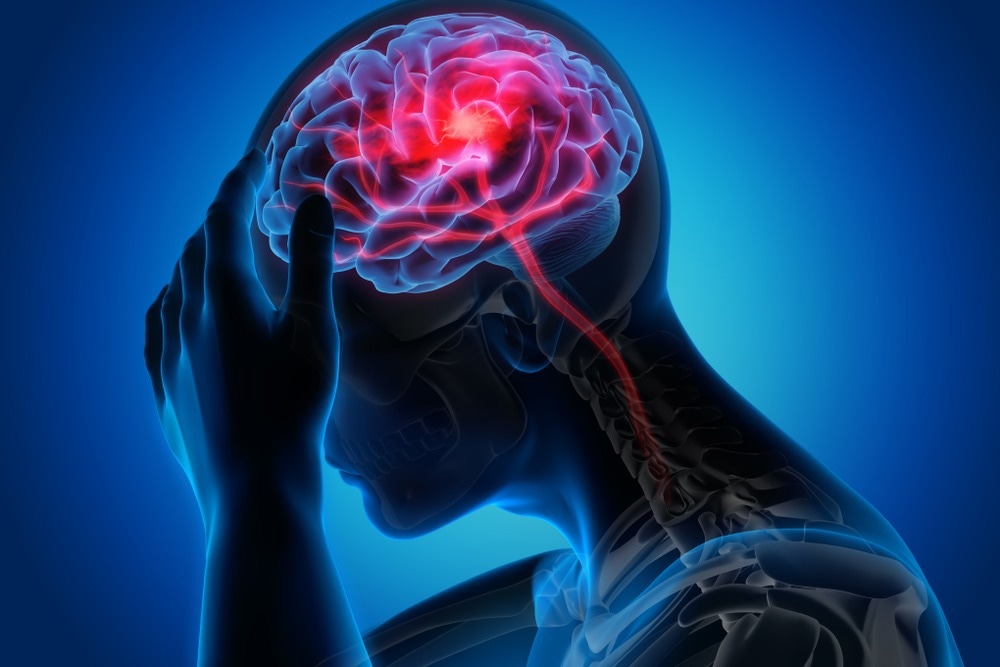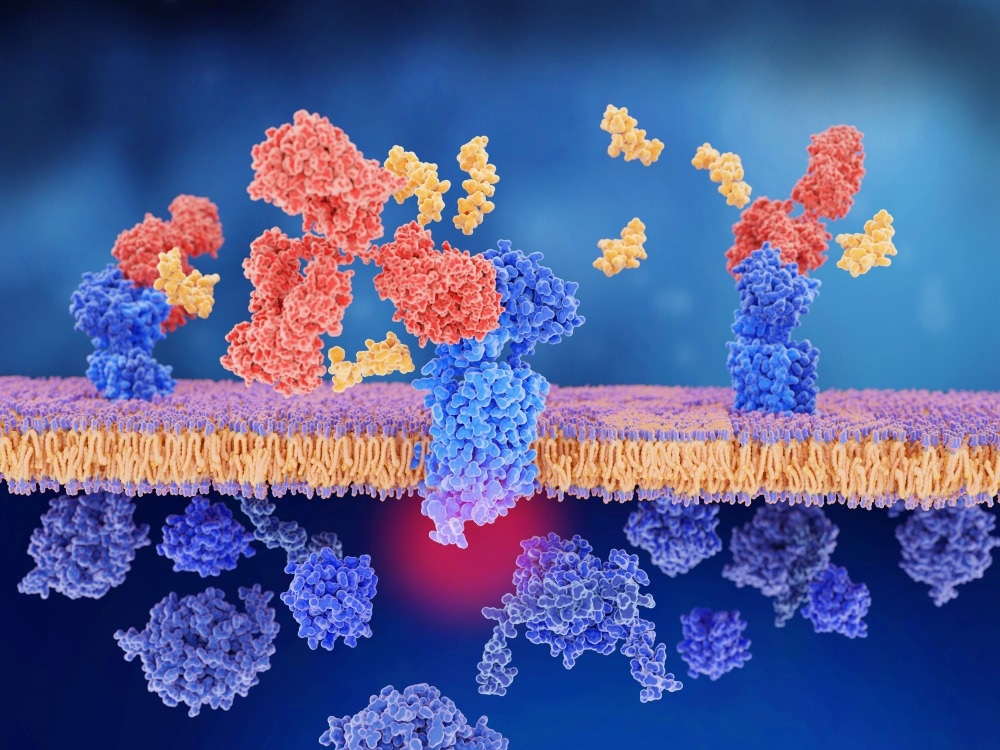In this interview, we speak to Mudra Kapoor, M.D., Vice President of Global Medical Affairs for Neuroscience at AbbVie, about treatment options for migraine and the impact for sufferers worldwide.
Please can you introduce yourself and tell us about your role at AbbVie?
My name is Mudra Kapoor, and I'm the Vice President of Global Medical Affairs for Neuroscience at AbbVie. By training, I started my career as a partner at a private family physician-owned practice. As my career progressed, I wanted to take my love of helping patients to a bigger scale and transitioned to a role at AbbVie, where I gained foundational research and development experience. This allows me to broaden my impact on patients in ways I could not before.
In my current role at AbbVie, I lead a global team providing medical leadership, strategic planning, resourcing, and clinical oversight for AbbVie's combined neuro-portfolio for multiple disease areas, including Parkinson's disease, migraine, therapeutic neurotoxin indications including, post-stroke spasticity & cervical dystonia and the promising neuroscience pipeline addressing diseases with significant global unmet medical need such as Alzheimer's disease.
Currently, AbbVie is working on a new treatment option for migraine. With 1 billion people worldwide suffering from migraine, why are new treatment options needed now more than ever?
Migraine is a complex neurological disease that can significantly affect the quality of life. Recurrent migraine attacks are often incapacitating and can prevent people from performing daily activities. Not only is it a highly prevalent condition, but it's also the leading cause of disability worldwide for people under 50 years of age. This poses both a social and financial burden that can negatively impact family life, social life, and work life.
Migraine impacts different patients differently, with some people living with frequent and more severe migraine. Since not all treatments work for everyone, now more than ever, it is important to introduce new and different options, especially for those patients who experience more frequent and severe migraine.

Image Credit: peterschreiber.media/Shutterstock.com
As migraine is a complex neurological disease, how does this make finding effective treatments more challenging? What factors need to be considered when designing a new treatment?
No two migraine patients are alike. That's what makes finding treatment options more challenging. The key to understanding migraine, and thus keeping in mind new treatments, is that the disorder is much more than just a headache. It can include a variety of other symptoms – vomiting, nausea, and sensitivity to light, to name a few. Because of this, many patients are forced to seek additional treatment options from physicians due to the difficulty of finding adequate relief. It's important for physicians to be able to recognize the migraine spectrum and prescribe proper treatment.
What does the current treatment landscape for episodic and chronic migraine look like? How do these two types of migraine differ?
Migraine is characterized broadly by attack frequency. People living with episodic migraine generally have one to 14 headache days per month. People with chronic migraine experience 15 or more headache days each month, with migraine symptoms on at least eight of those days, each lasting four or more hours.
From an AbbVie pipeline perspective, atogepant has been approved by the U.S. FDA for the preventive treatment of episodic migraine in adults and is awaiting EMA approval of its' marketing authorization application for the preventative treatment of both episodic and chronic migraine in adults. BOTOX (onabotulinumtoxinA) is approved for the preventive treatment for adult patients with chronic migraine globally, and ubrogepant has been approved for the acute (immediate) treatment of migraine with or without aura in the U.S.
AbbVie has recently submitted a Marketing Authorization Application (MAA) to the European Medicines Agency (EMA) for atogepant in the preventive treatment of migraine. Please can you tell us more about how atogepant was designed and how it works to effectively treat migraine?
Atogepant is an orally administered CGRP receptor antagonist (gepant) specifically developed for the prophylaxis (preventative) treatment of migraine. CGRP and its receptors are expressed in regions of the nervous system associated with migraine pathophysiology. Studies have shown that CGRP levels are elevated during migraine attacks, and selective CGRP receptor antagonists confer clinical benefits in migraine.
If approved, atogepant would be the first daily oral CGRP receptor antagonist (gepant) for the prophylaxis treatment of migraine in Europe.

Image Credit: Juan Gaertner/Shutterstock.com
AbbVie's application is based on the Phase 3 ADVANCE and PROGRESS studies evaluating atogepant's efficacy for migraine, amongst other factors. Can you tell us more about these studies and the results so far?
The marketing authorization application (MAA) submission to the European Medicines Agency (EMA) for atogepant for the prophylaxis of migraine in adult patients is based on two pivotal Phase 3 studies evaluating atogepant in adult patients with episodic and chronic migraine: the ADVANCE trial and PROGRESS study.
The pivotal, Phase 3, multicenter, randomized, double-blind, placebo-controlled, parallel-group ADVANCE trial evaluated the efficacy, safety, and tolerability of once daily (QD) oral atogepant for the prophylaxis of episodic migraine. The study met its primary endpoint of a statistically significant reduction in mean monthly migraine days across the 12-week treatment period compared to placebo. This was found across all active treatment arms of atogepant – 10 mg, 30 mg, and 60 mg QD doses. The adult patients enrolled met the International Classification of Headache Disorders (ICHD) criteria for a diagnosis of migraine with or without aura. The study also found that a greater proportion of atogepant-treated participants achieved at least a 50% reduction in mean monthly migraine days for all doses compared to placebo and met other key secondary endpoints.
The pivotal, Phase 3, global, randomized, double-blind, placebo-controlled, parallel-group PROGRESS study, evaluating the safety, efficacy, and tolerability of oral atogepant in adult patients for the prophylaxis of chronic migraine, met its primary endpoint of statistically significant reduction from baseline in mean monthly migraine days compared to placebo across the 12-week treatment period. The trial also demonstrated that treatment with atogepant 60 mg once daily (QD) and 30 mg daily (BID) resulted in statistically significant improvements in all secondary endpoints. This includes a key secondary endpoint that measured the proportion of patients that achieved at least a 50 percent reduction in mean monthly migraine days across the 12-week treatment period.
In both the Phase 3 PROGRESS and Phase 3 ADVANCE studies, all doses were well tolerated, and the overall safety profiles were consistent with safety findings observed in previous studies for the prophylaxis of episodic migraine and chronic migraine populations. The most common adverse events were constipation and nausea.
If successful, AbbVie would be the only company to offer two treatments for individuals with chronic migraine. How significant is this within the field of pharmaceutical research?
If approved, not only would AbbVie be the only company to offer two treatments for people suffering from chronic migraine, but atogepant would also be the first daily oral CGRP receptor antagonist (gepant) for the preventative treatment of migraine in Europe.
While chronic migraine impacts only 1%-2% of the global population, people living with frequent, more severe migraine have the greatest need for treatment and receive 50% of preventive migraine prescriptions. Atogepant has the potential to provide a preventative treatment option for adult patients suffering from chronic or episodic migraine.
Do you believe that atogepant could revolutionize the way migraine is currently treated? What would this mean not only to clinical settings but for the patients themselves also?
If approved, atogepant would add another treatment option for people suffering from migraine and ultimately help patients reduce the number of days they suffer from migraine each month. At AbbVie, we strive to empower people living with migraine disease and to provide them with the best chance of migraine freedom.
Are you hopeful that with continued research, funding, and collaboration within the drug discovery sector, we will continue to further understand the pathophysiology of neurological and psychiatric disorders?
Absolutely. It's a really exciting time to work in neuroscience research due to rapid advancements in precision medicine, data convergence, and genetics/genomics, which are fueling knowledge across the industry.
That's not to say neuroscience isn't challenging. Setbacks are inevitable, but setbacks are what fuel us to dive deeper and continue advancing science in pursuit of new therapies. Every challenge in this uncharted territory drives us to discover solutions for patients, care partners, and clinicians. Our commitment to preserving personhood for those living with neurological and psychiatric disorders is unwavering.
What's next for AbbVie and migraine research?
At AbbVie, we continue to fight alongside patients, care partners, and clinicians against migraine's often-unrelenting burden. Through education, ongoing cutting-edge research and development, and partnerships with the migraine community, we strive to help those with migraine navigate barriers to care, access effective treatments and reduce the impact of migraine on their lives.
Where can readers find more information?
About Mudra Kapoor, MD
As VP Neuroscience, Global Medical Affairs, I lead a global team providing medical leadership, strategic planning, resourcing, and clinical oversight for AbbVie's combined neuro-portfolio for multiple disease areas, including Parkinson's disease, migraine, therapeutic neurotoxin indications including post-stroke spasticity & cervical dystonia and the promising neuroscience pipeline addressing diseases with significant global unmet medical need such as Alzheimer's disease.
My career began as a primary care physician. As my career progressed, I began to learn more and do more, inspiring me to transition to AbbVie as an Associate Medical Director in the Physician Development program gaining foundational experience in research and development. While in that role, I executed projects across rheumatology, metabolics, and hepatology.
From there, my role broadened to include Hepatitis C Clinical Development. I then advanced to Medical Director of Mature Products, where I developed and led the strategic initiatives for products across the life cycle, spanning metabolic, immunology, anti-infective, pulmonary, and pain therapeutics.
The next step in my career journey brought me to Singapore, where I ensured launch readiness for two hepatology products across the Asia Pacific region, where one of our Affiliates became the highest performing globally. My role expanded to include multiple other therapeutic areas such and leading my team across multiple initiatives including robust evidence generation and scientific communication. Subsequently I returned to the US and led the Rheumatology Global Medical Affairs team to ensure we enabled successful launches across rheumatolgy indications globally.
A respected leader in medical affairs, I have received nine awards from AbbVie in recognition for exemplifying integrity, fairness, and honesty in my work, and have published 15 peer-reviewed articles.